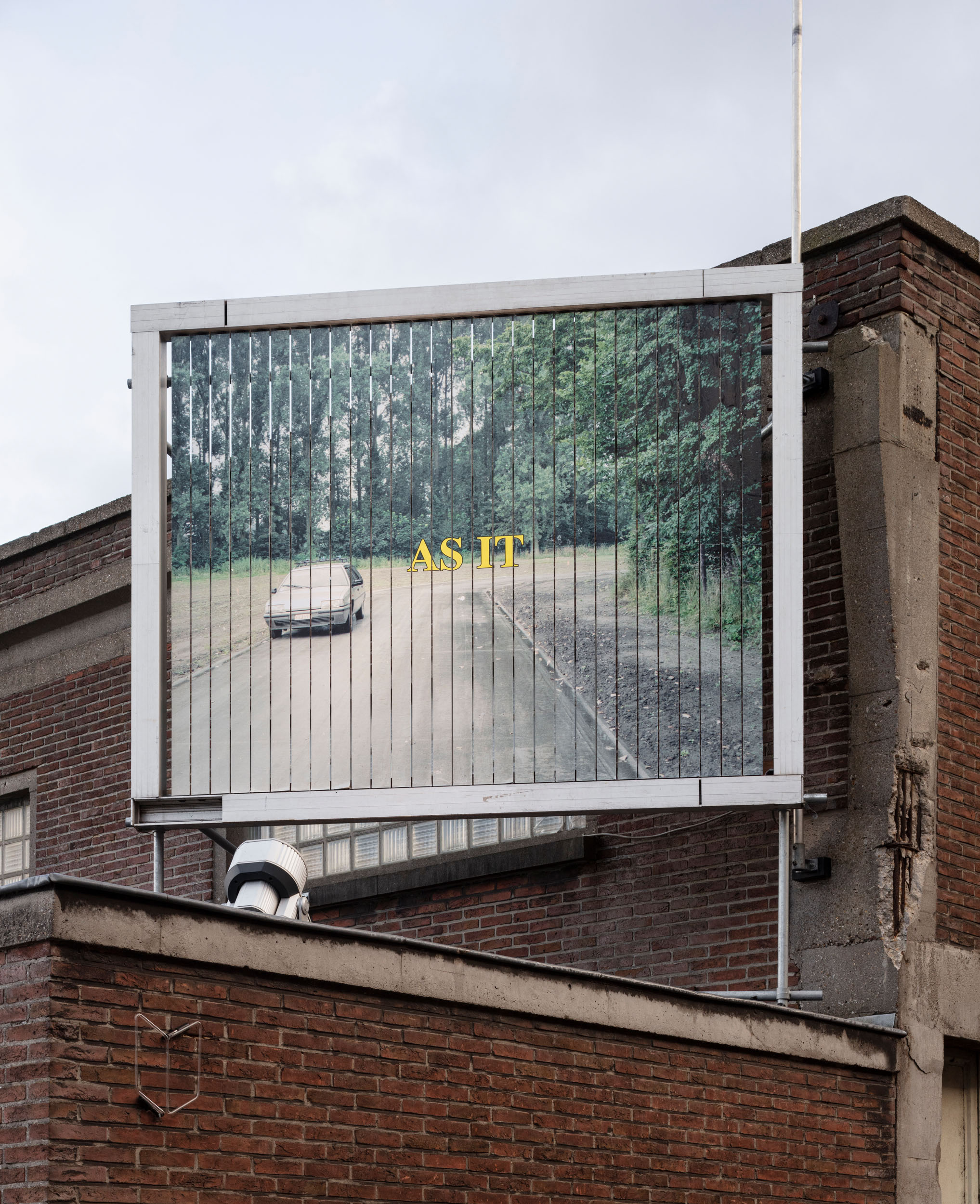The Situation As It Is
Ring binders in the architect’s archive are filled with photographic negatives. Subjects are scattered. The documents try to tell a story of an existing condition. This is the state things are in. Buildings are perpetually unfinished. The dog keeps barking. It’s our third birthday, again. A plot emerges.
The Situation As It Is is a photonovel based on an architect’s photographic archive. It tells the story of the events leading up to an unsettling state decree and its aftermath. Sometime in the early 1990s, from one day to the next, the decree declared that the built landscape had to be preserved. It prohibited any new construction. ‘The situation as it is, will be the situation as it is.’ The effects, both on the landscape as on the lives of those involved, would be far-reaching.
Documenting the existing condition (de bestaande toestand) is a functional tool in architecture and urban development: photographs describe a building, a landscape, infrastructure…. in order for it to be demolished, adjusted, rebuilt. The existence of the image, the document that presents the situation as it is, implies and initiates change.
The Situation As It Is is a story that unfolded in episodes of three frames, rhythmically revolving on a billboard mounted onto 019’s facade. In 2022 it appeared as a book.
ISBN 9789493146983
Arnout De Cleene, Michiel De Cleene, Wim De Cleene
Design: Haron Barashed/019
Published by 019/APE
18,5 x 29,7cm, 128 p, softcover
15,00 EUR
Order your copy (15,00 EUR)
– via Art Paper Editions;
– in bookstores near you;
– by emailing us.
The Situation As It Is is part of Documenting Objects, a research project at KASK & Conservatorium, School of Arts Gent.
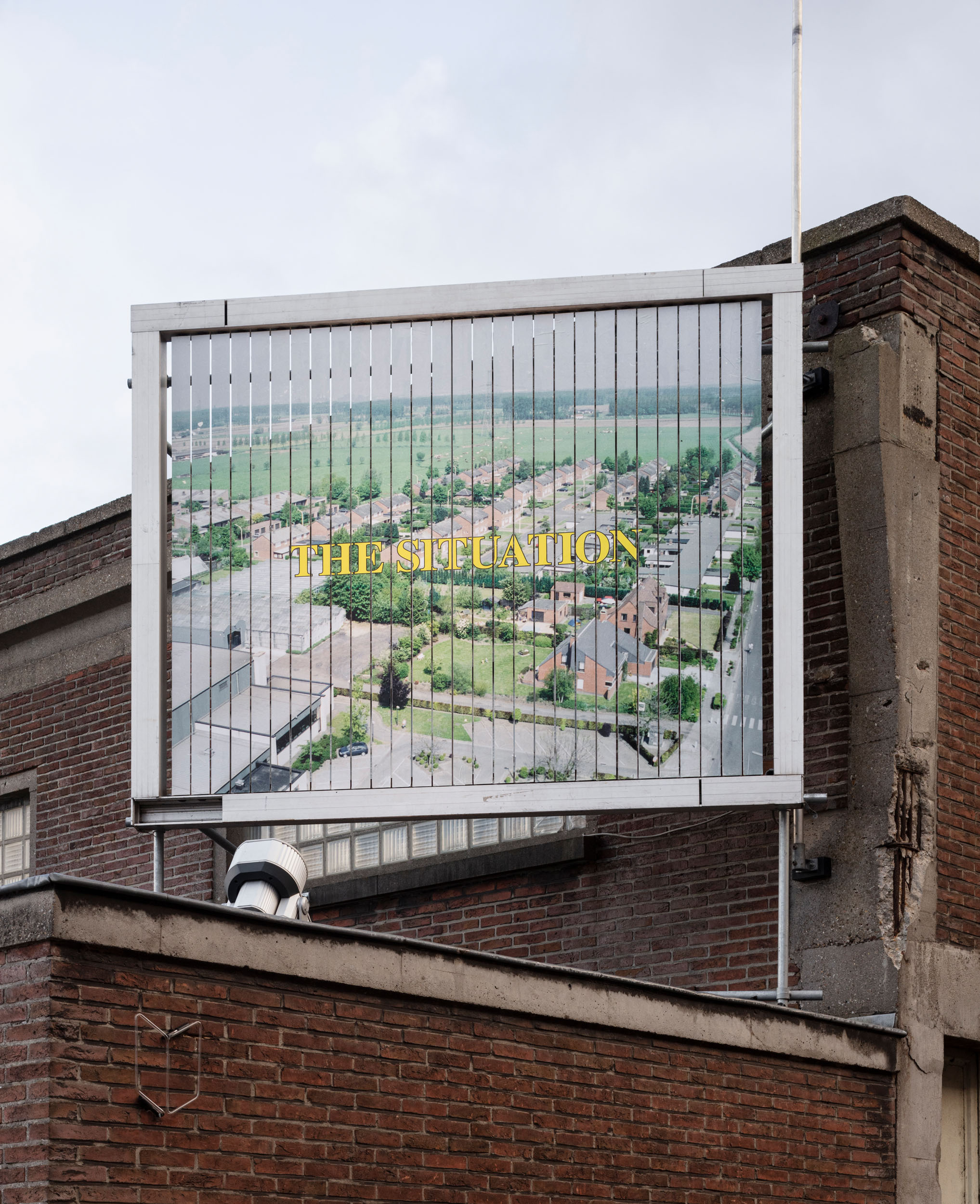
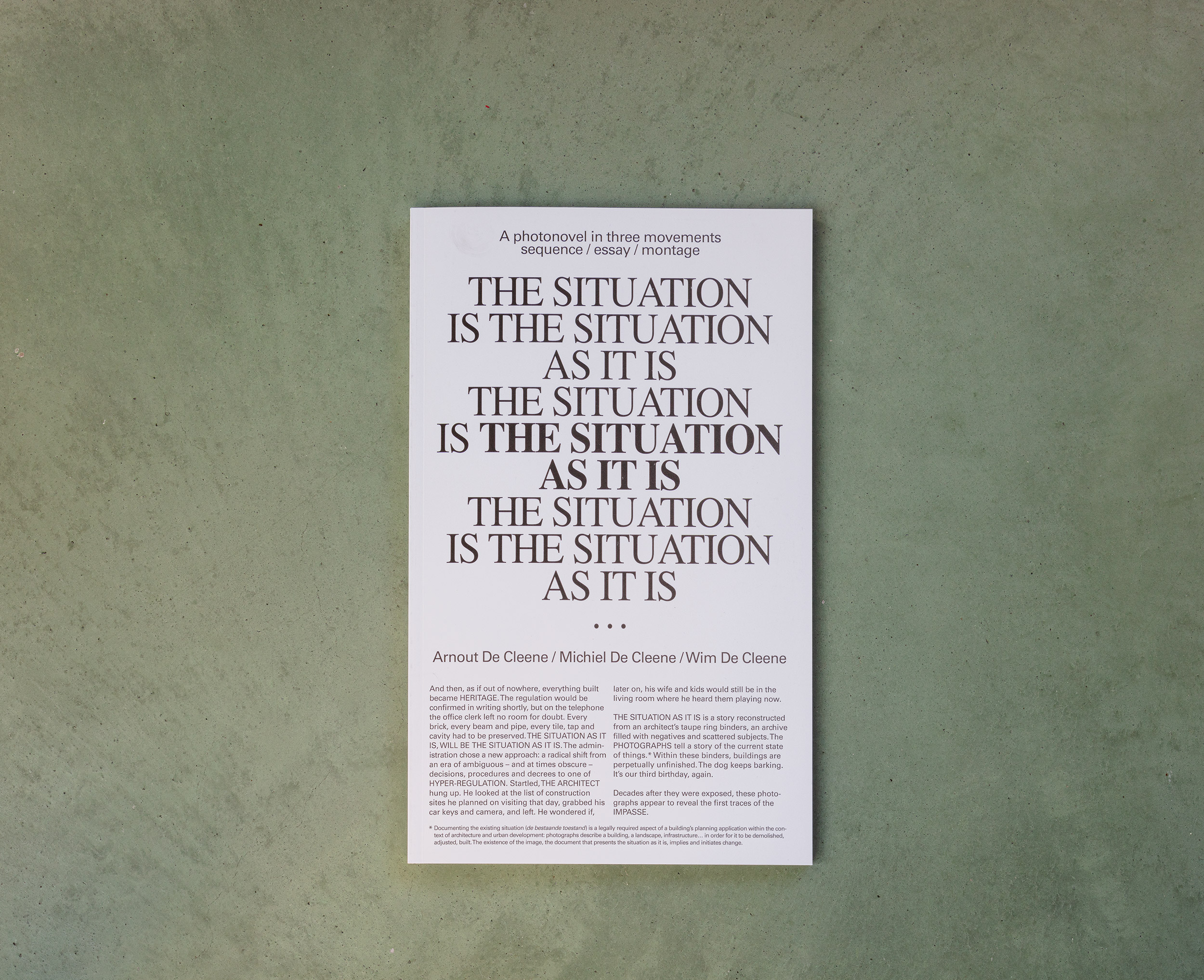
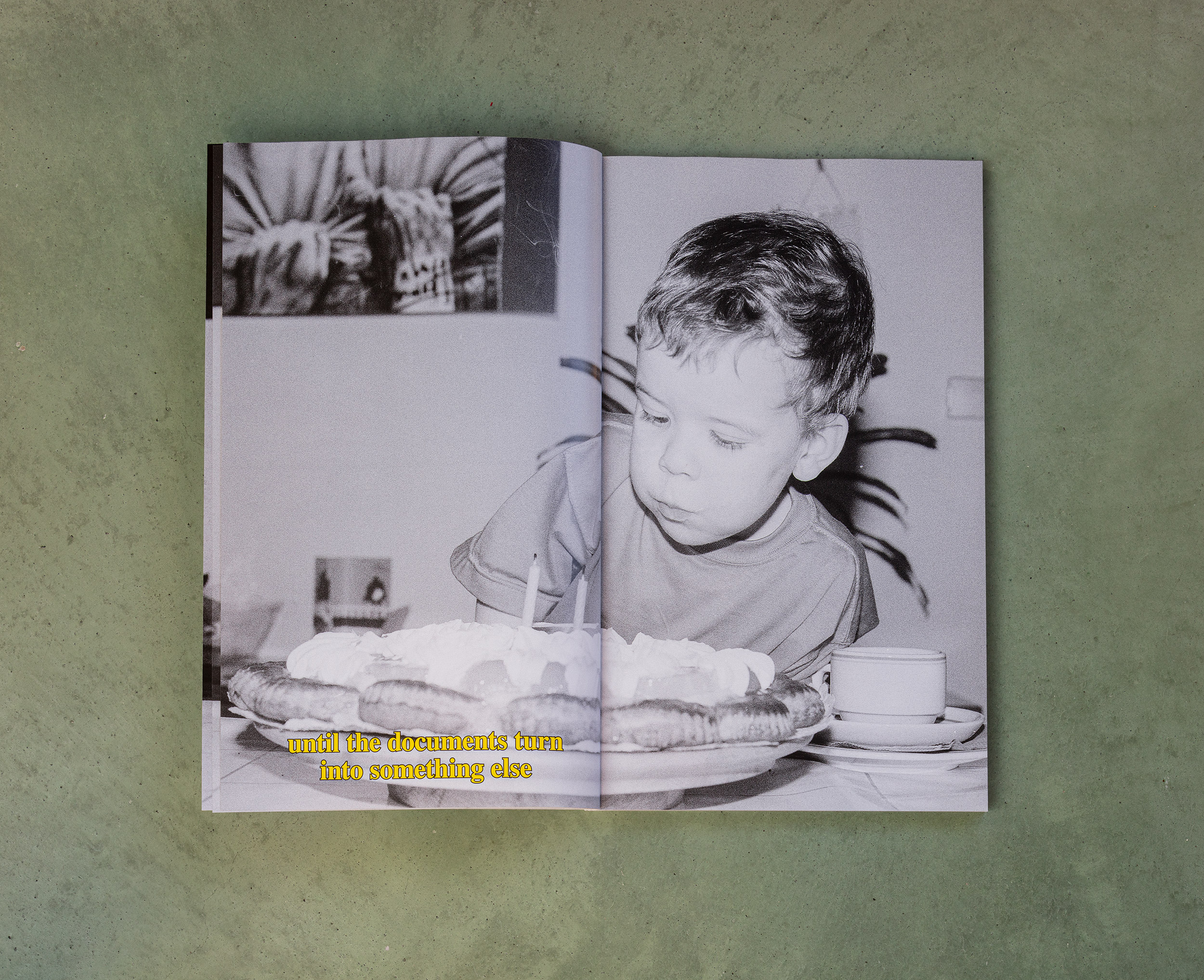

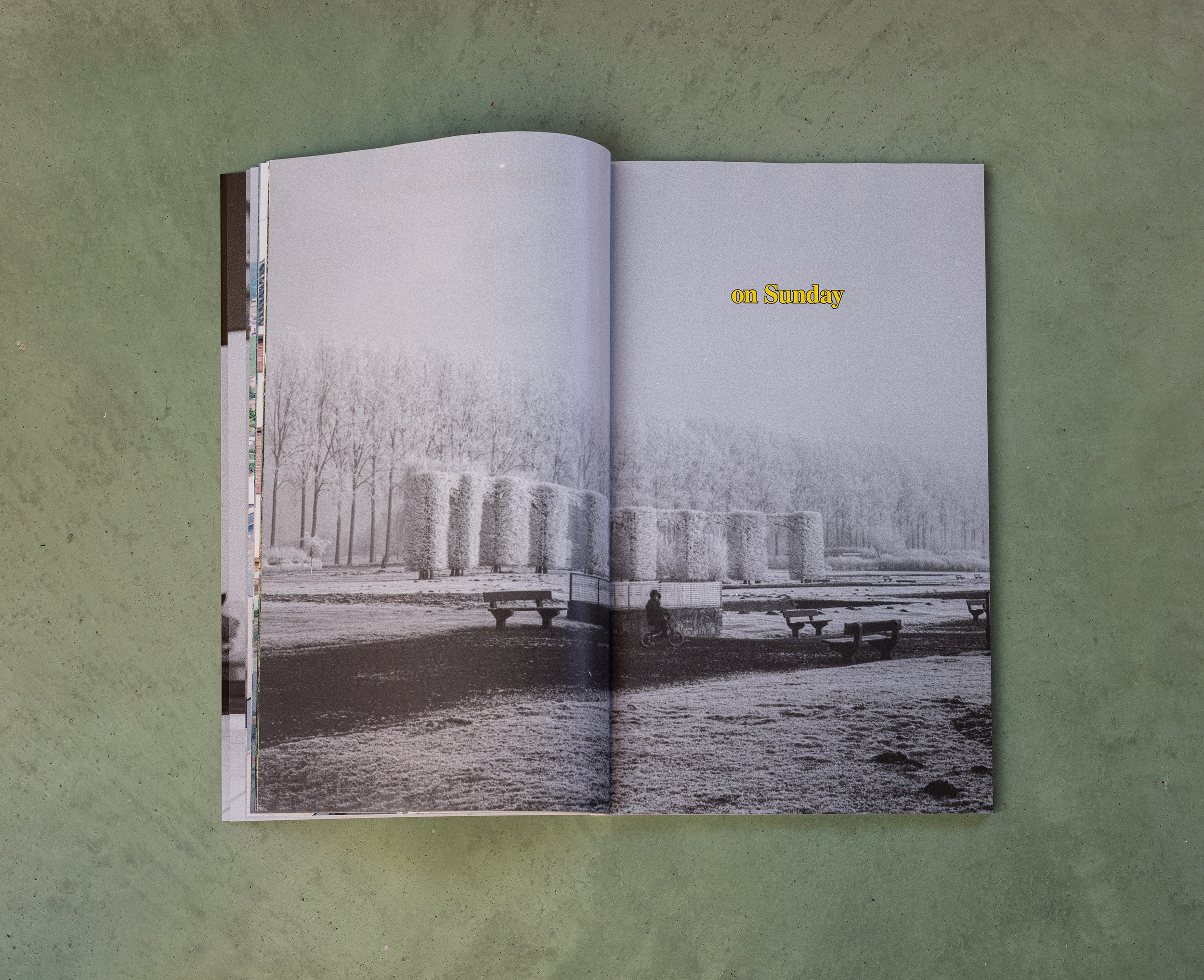
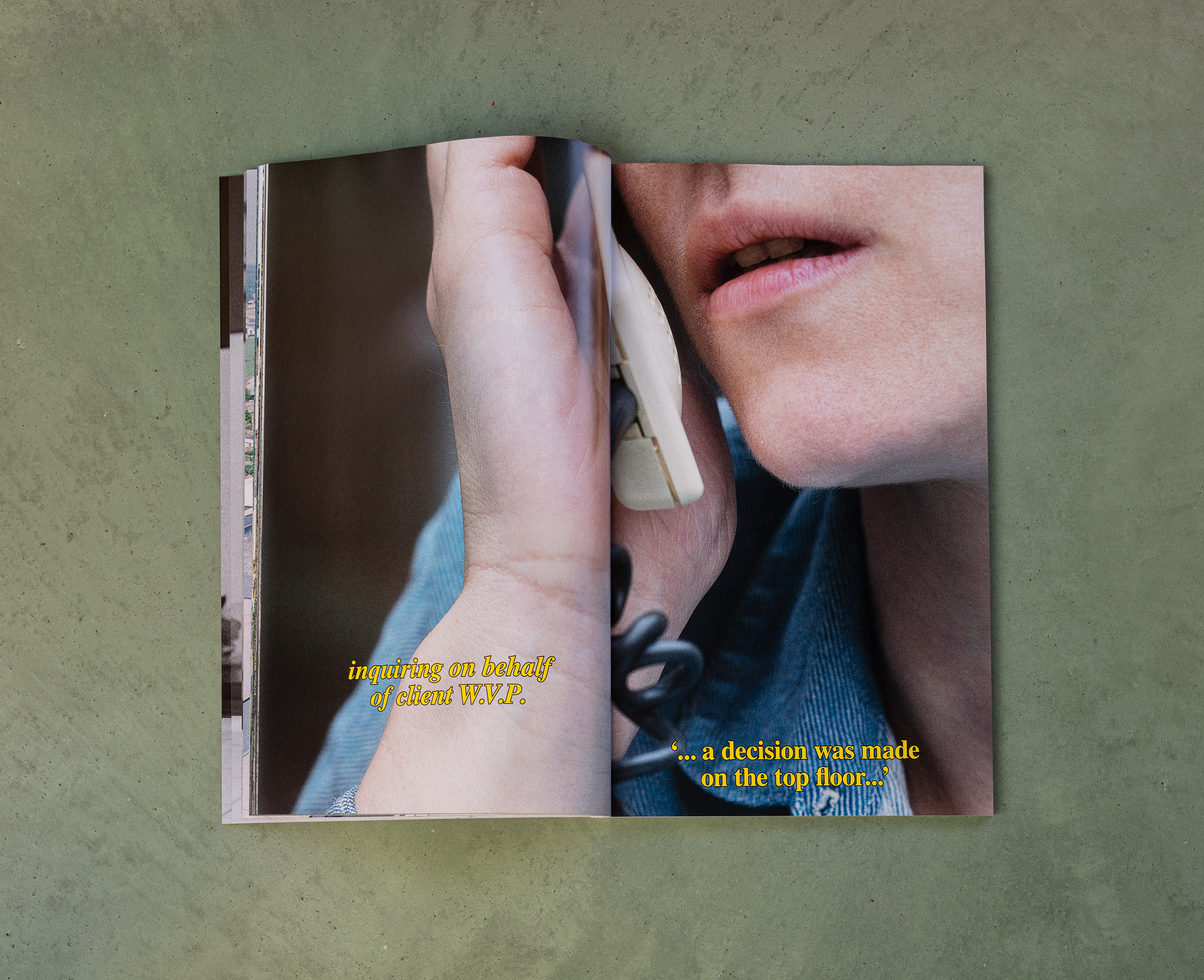
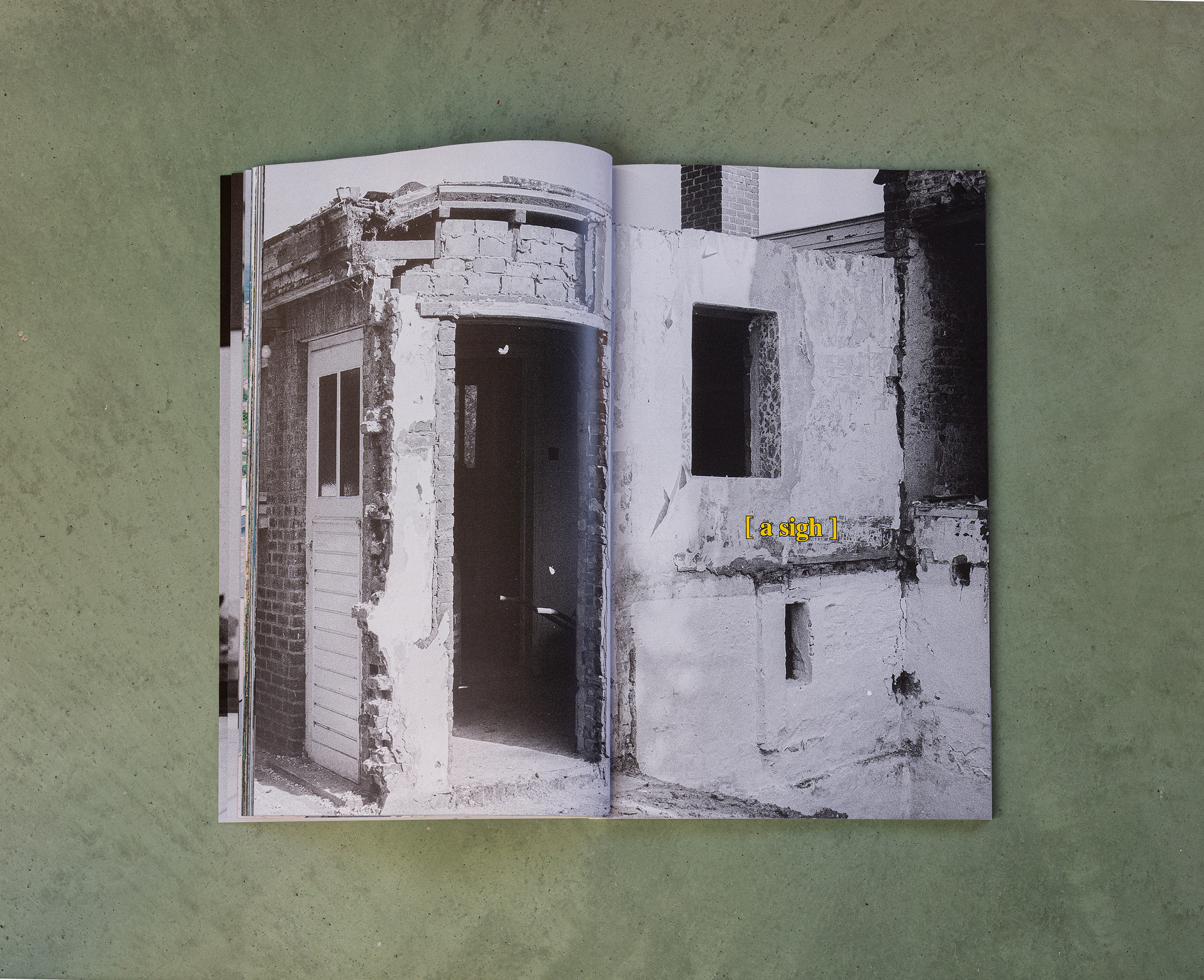
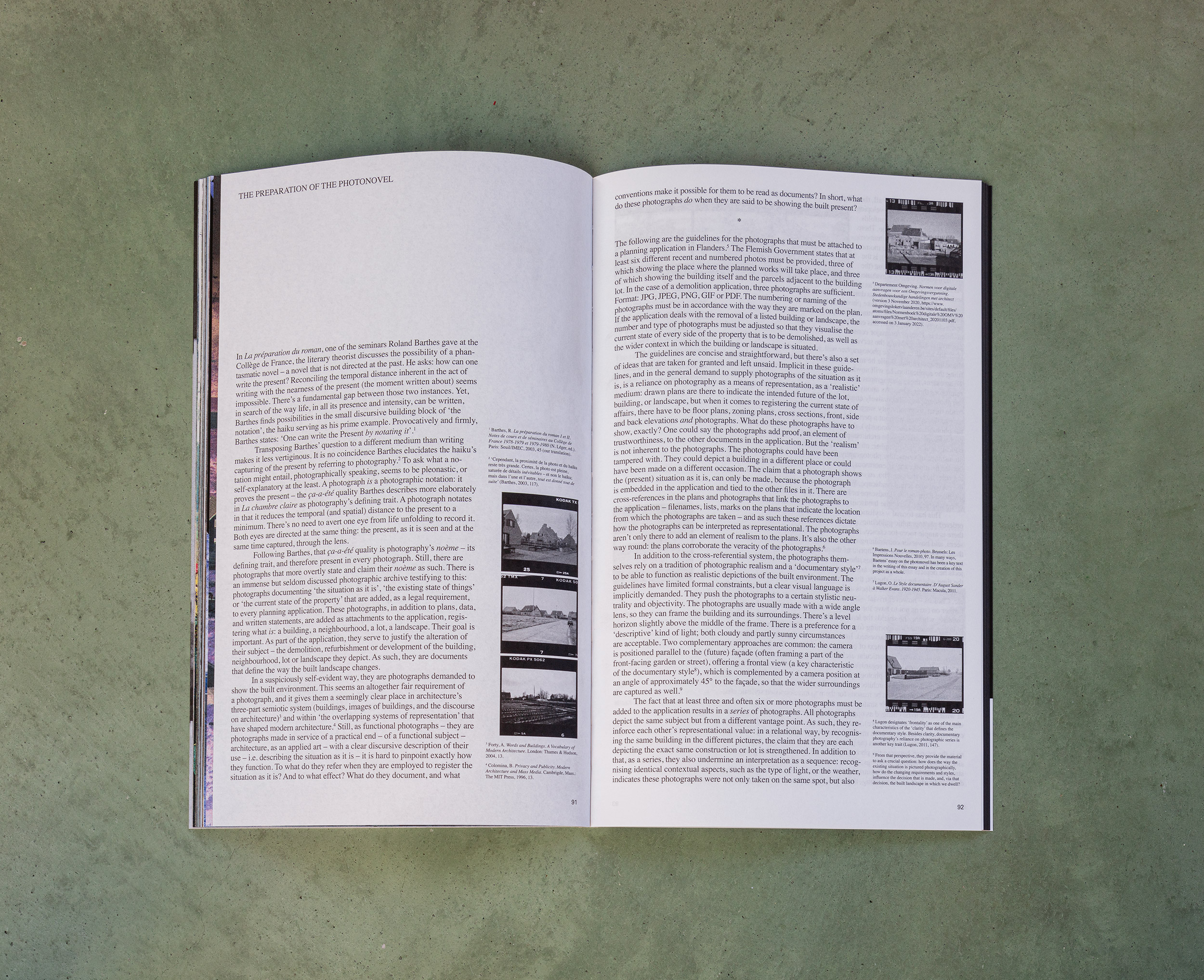
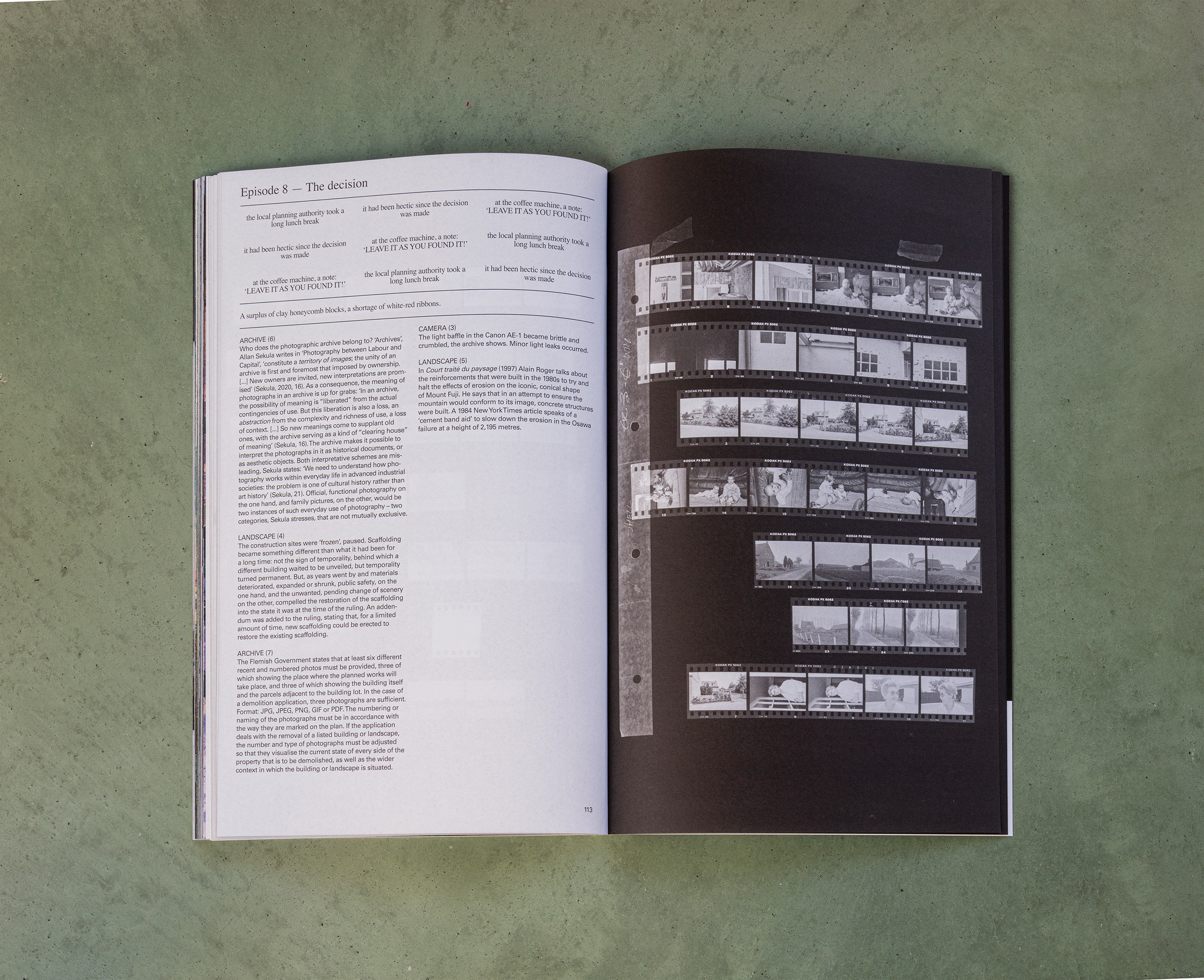

Episode 1 - - - Prologue - - - A kid blows out three candles on a whipped cream covered cake. Photography is not how the story is told, but the premise to tell the story. It is the incentive for an action - a building block for a narrative. Smoke fills the living room.
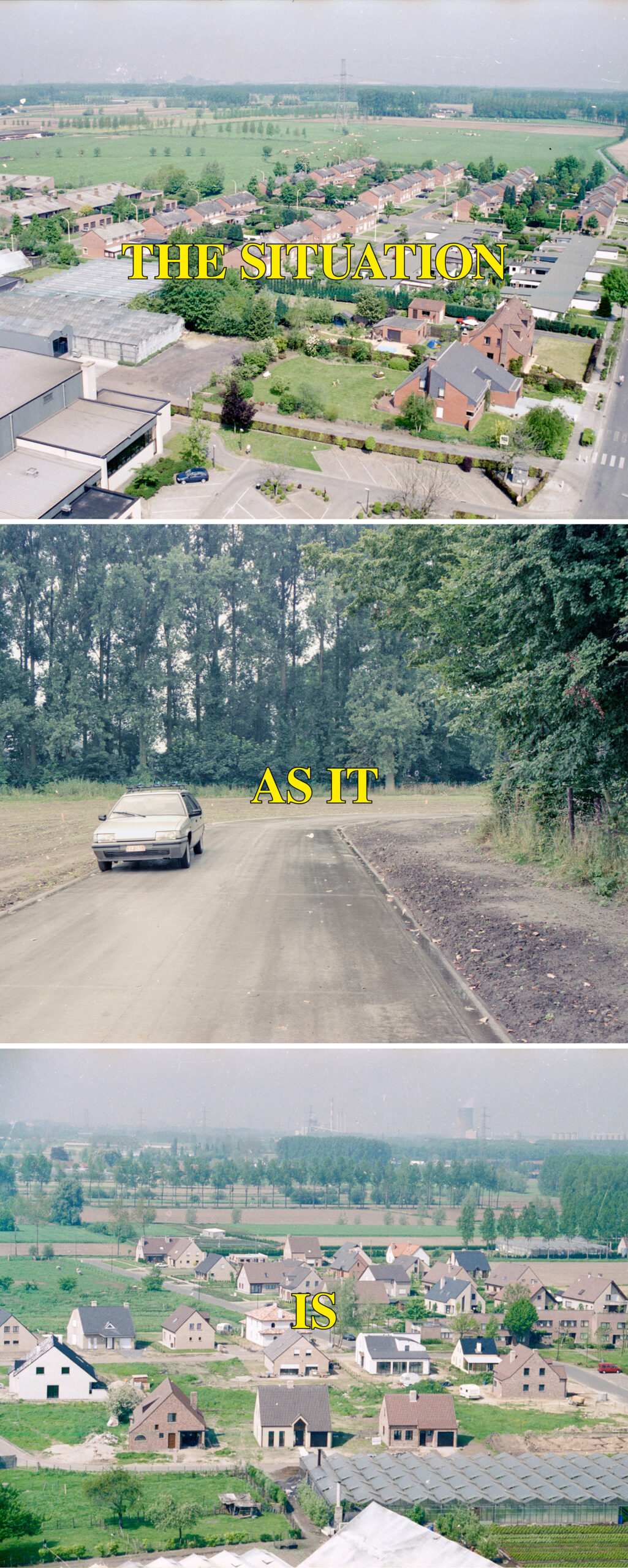
Episode 2 - - - Title - - - Periaktos: a three-sided revolving apparatus used on the stage in ancient Greek theaters. Each side of the apparatus presents a scenery. Rotation of the prisms of the apparatus results in a different landscape.
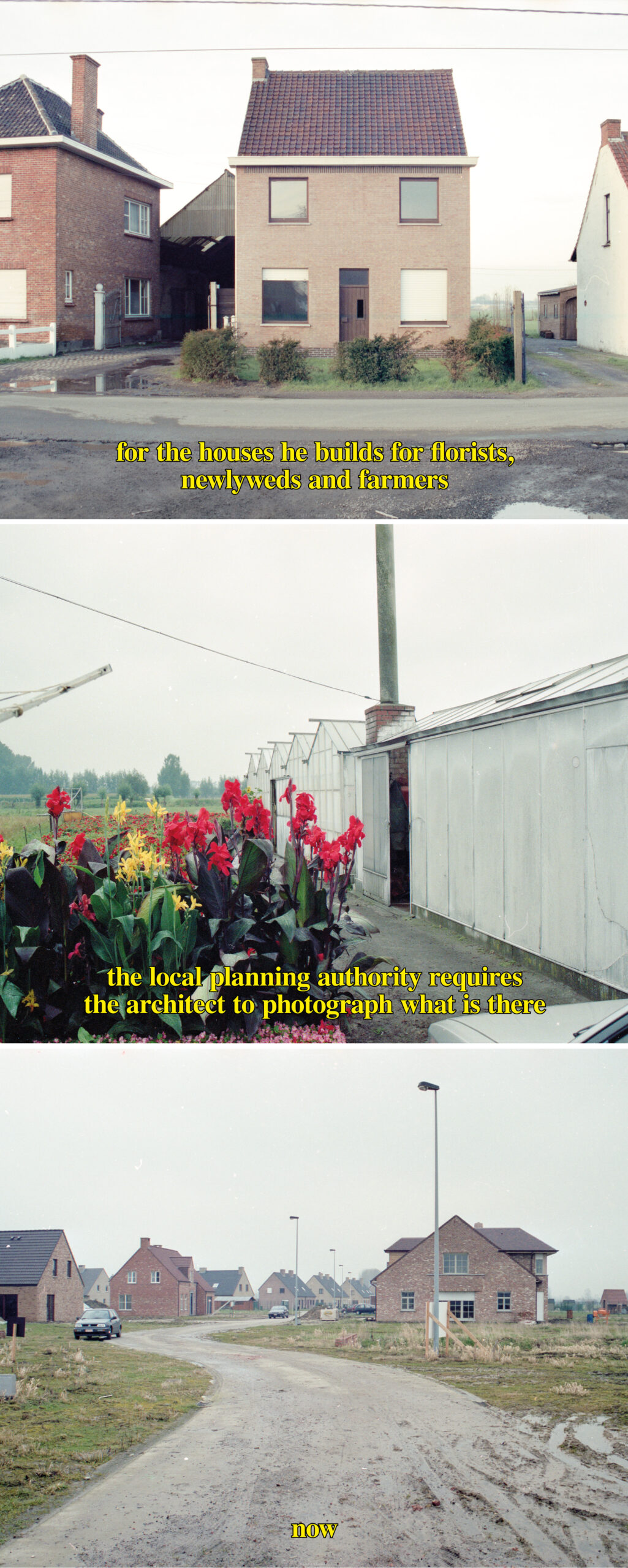
Episode 3 - - - Setting - - - A nondescript dwelling; flowers in front of a greenhouse’s chalked glass; a muddy bend in the road among newly built houses and empty lots. The protagonist, an architect, is introduced.

Episode 4 - - - The narrators’ perspective - - - In those thirty odd years between then and now, time created hindsight. A post factum point of view on what was, then, barely recognizable as a fact.
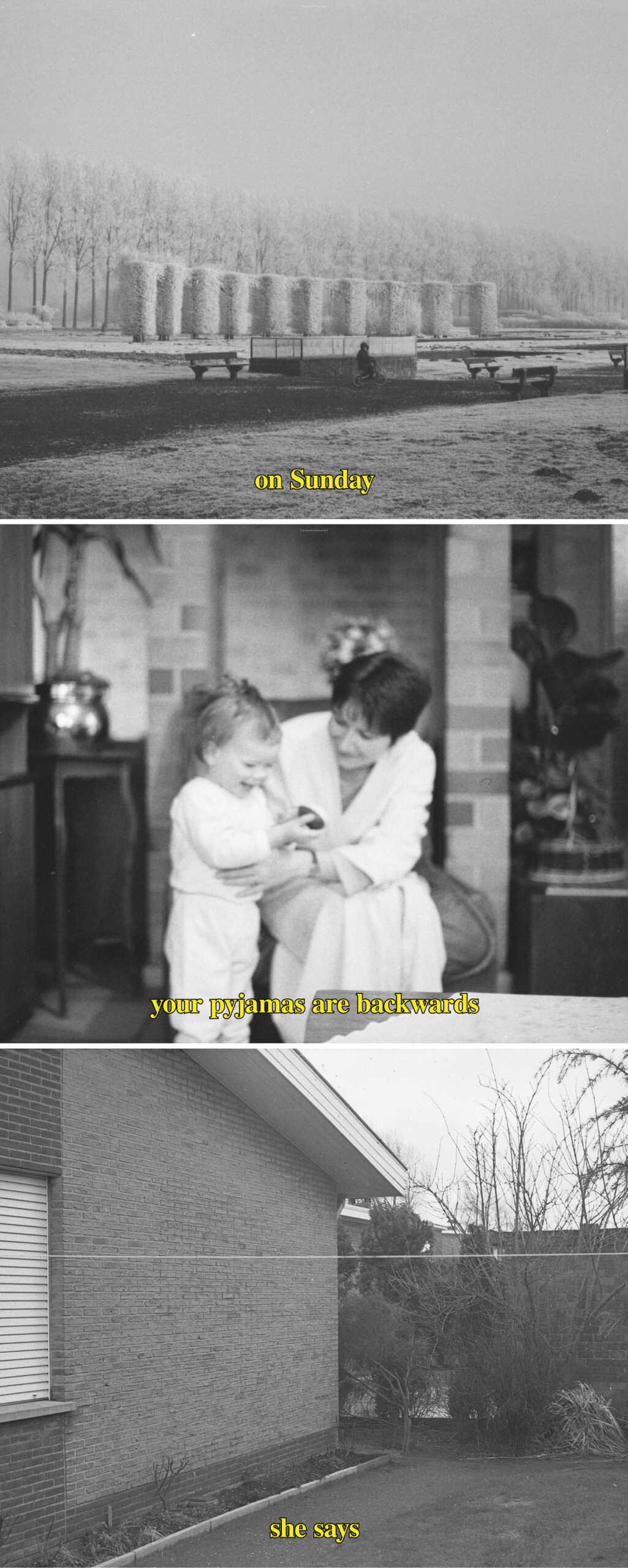
Episode 5 - - - Introducing the architect’s family - - - she says on Sunday your pyjamas are backwards on Sunday your pyjamas are backwards she says your pyjamas are backwards she says on Sunday
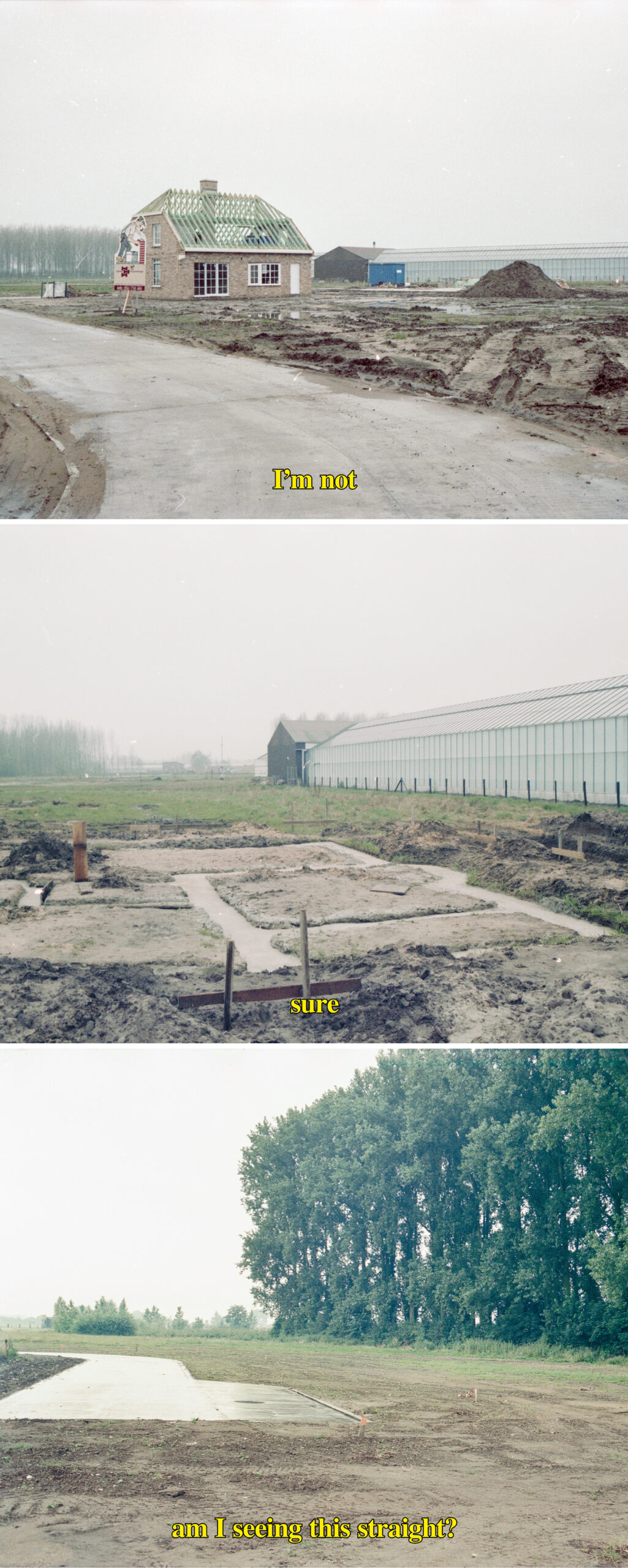
Episode 6 - - - Interior Monologue - - - Half thoughts, impressions, doubts and associations trouble the architect.
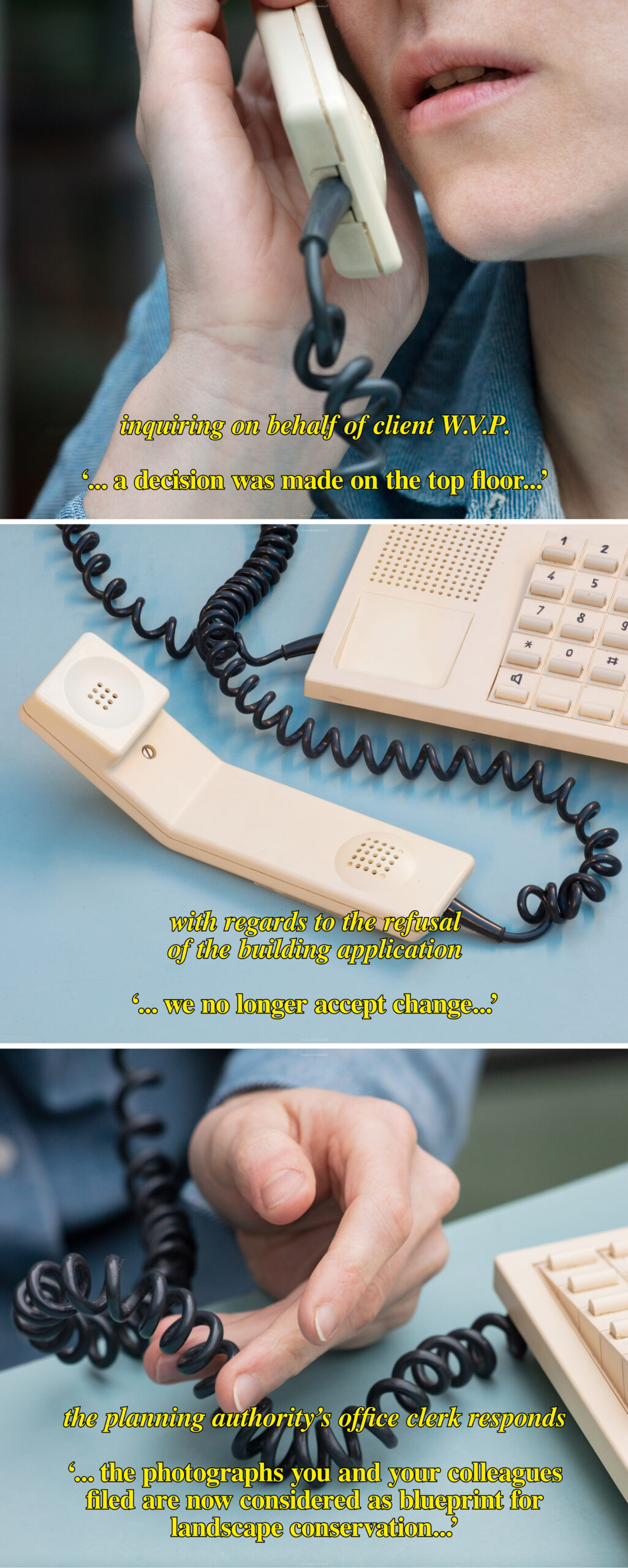
Episode 7 - - - The Conversation - - - And then, as if out of nowhere, everything built became heritage. Every brick, beam and pipe, every tile, faucet and roofline has to be preserved. The regulation would be confirmed in writing shortly, but the office clerk left no room for doubt.
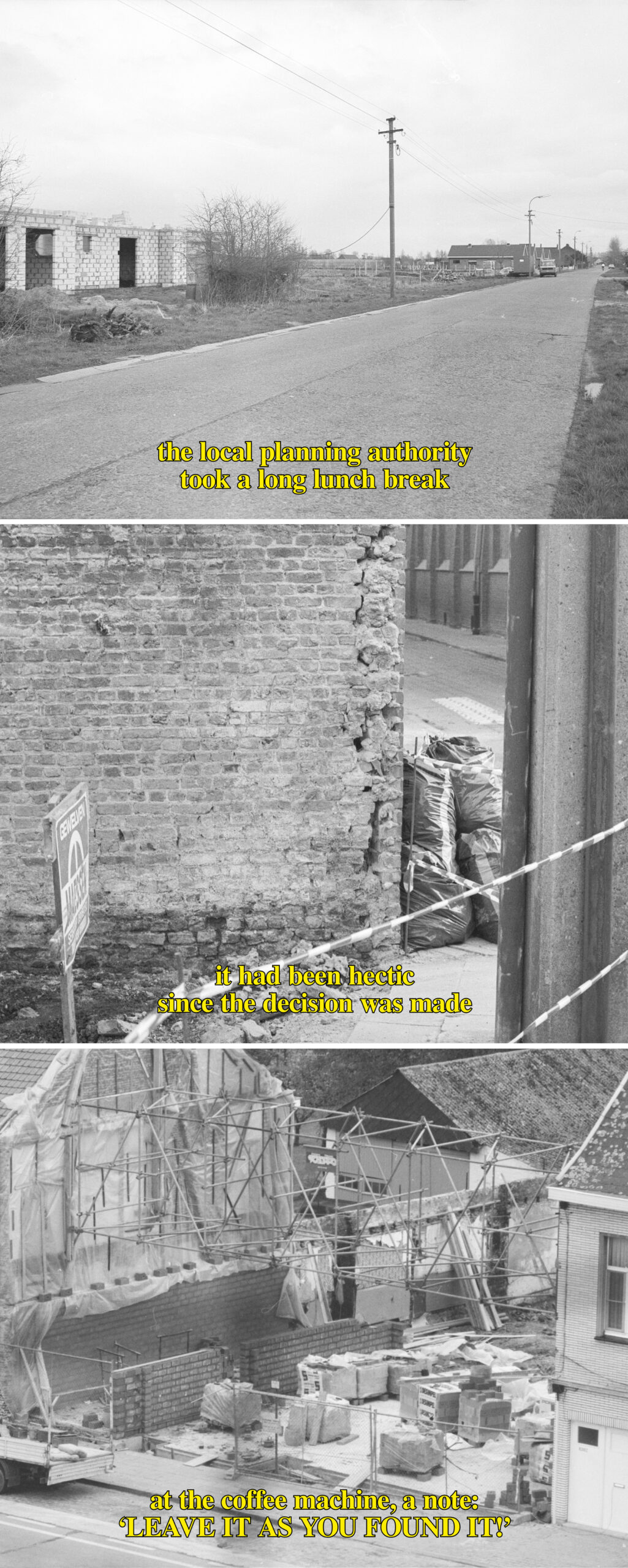
Episode 8 - - - The Decision - - - The intern was asked to clean the office kitchen daily. On the photocopier near the kitchen window that gives out to the train station’s brutalist facade, someone had forgotten a sheet. It was the last page of an 8-page draft of a circular. It stated: ‘... indefinitely, as of today.’

Episode 9 - - - The Landscape - - - Kodak introduced SAFETY FILM as an alternative to negatives based on the extremely flammable nitrocellulose (also known as cellulose nitrate, flash paper, flash cotton, guncotton, pyroxylin and flash string). The substance laid uncountable photographic archives to ashes. Once burning it is extremely difficult to extinguish.
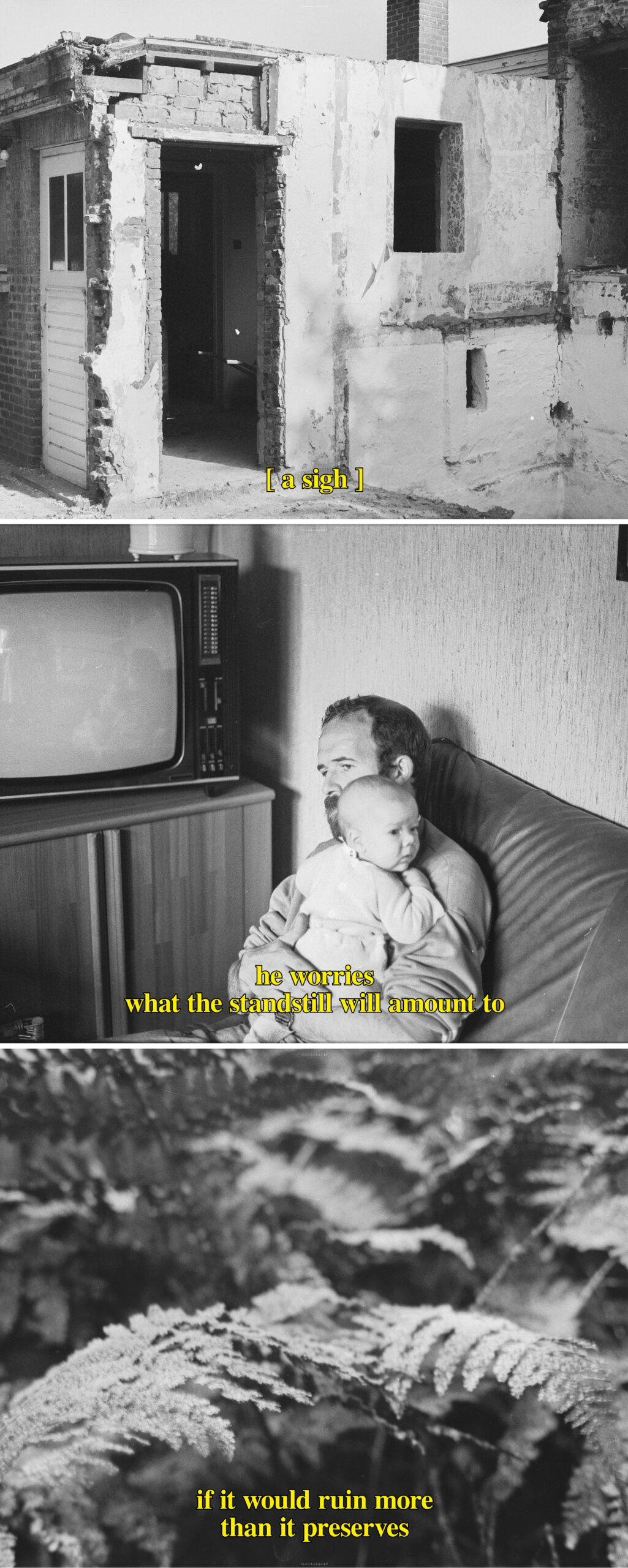
Episode 10 - - - Interior Monologue #2 - - - As the impasse persisted, he (the architect) tried watching some television to ease his mind, but to no avail. 19h00: The Evening News. 19h30: Sports Magazine. 20h05: The Weather. 20h10: The Picture of Dorian Gray (A. Lewin, 1945). 22h: The Evening News (rebroadcast, on repeat). He must have fallen asleep. When he woke up, the streets in the city of G. had flooded, again and again. He turned off the TV and went to bed.

Episode 11 - - - The Upheaval - - - The riots would continue. They evolved into a weekly gathering. City squares became littered with building materials, like giant construction sites. The bricks, pipes and plywood piled up, turning into new, undesigned and seemingly uninhabitable architecture.

Episode 12 - - - Fissure - - - Seen from up close, the crack in the wall seemed without scale and unfathomable. A hair, a pencil line, a gap, a crevasse.

Episode 13 - - - Intensification - - - When the rebar in reinforced concrete rusts, the expansive reaction ruptures the concrete, exposes the steel and accelerates deterioration. It is said that ‘the concrete rots’. The rot is difficult to counteract, let alone preserve.
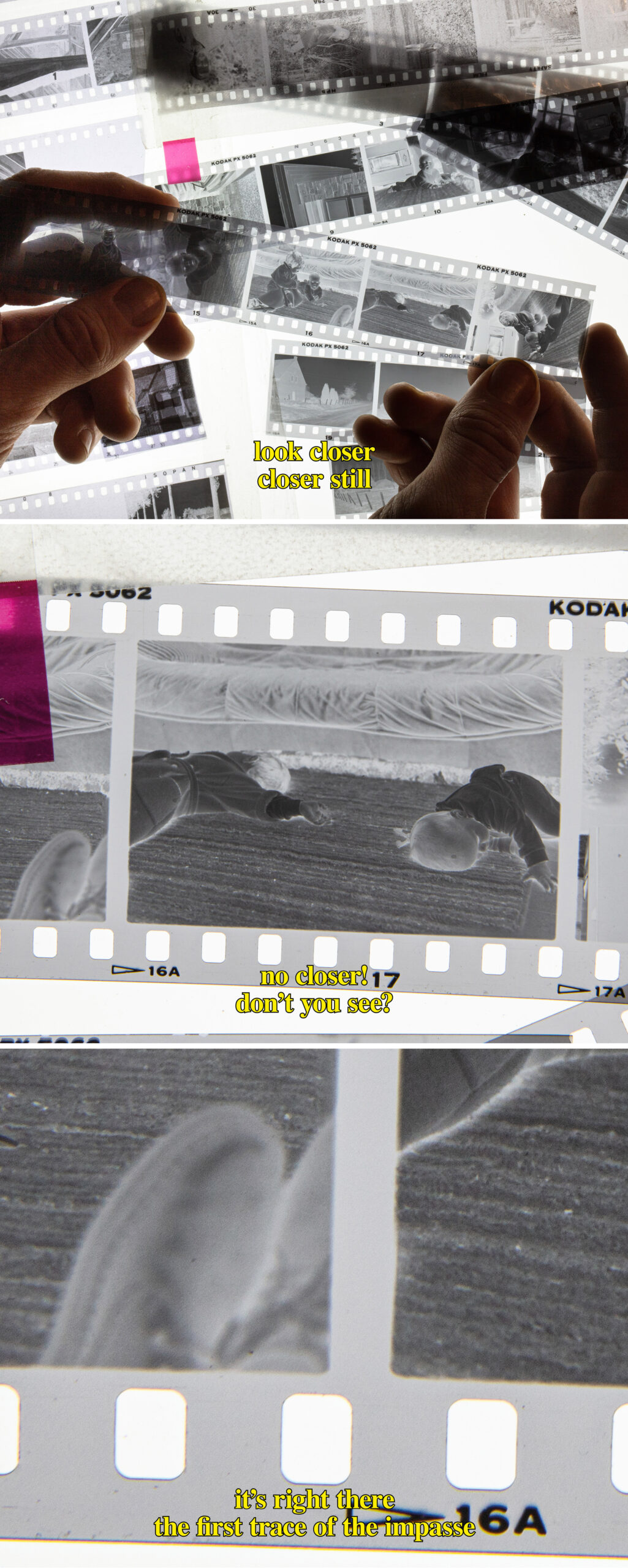
Episode 14 - - - Mise en abyme - - - The scattered negatives on the lightbox show bricks, eaves and conifers, a farmhouse, poplars and family pictures. Two kids in bathrobes and pyjamas on the carpet. His shoes appear in the lower right corner of negative 16. The grain of the film and the rough fibre of the jute carpet become indistinguishable.
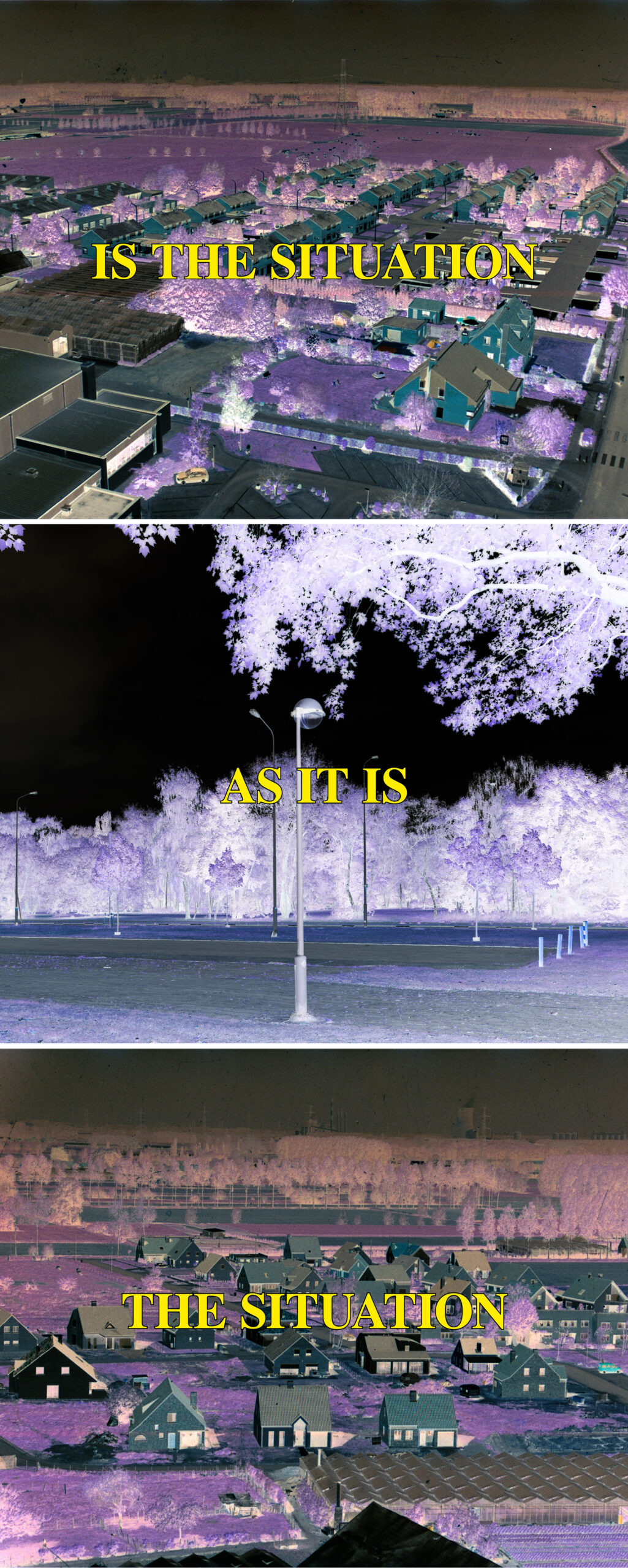
Episode 15 - - - The end - - - The village sprawl grinds to a halt. In the middle of a purple lawn, two children are standing still. They appear to be looking at a pitchblack bench in the day care’s garden. An impasse. At the horizon, beyond the poplars, greenhouses and fields, the grain silos, chimneys and pylones loom. The cooling tower’s vapor goes straight up. It’s a windless day.
